In addition to pinwheels and Leibniz cylinders, various other systems of mechanical calculation were conceived, some of which gave rise to calculators with very similar functions, such as the geared sector, the machine based on proportional levers, or the unique directly multiplying Millionaire, which is unfortunately too large to fit into this exhibition.
Other machines had a completely different approach. The differences between the old and the new world quickly became apparent. In the United States, the main battle between manufacturers was between the Burroughs printing calculators, in which the number was entered on a keyboard and then processed and printed by the stroke of a lever or the rotation of a motor, and the faster Comptometer calculators, in which the number was added immediately to the result register by pressing a key. From the American point of view, an adding machine with a well-trained operator was all that was needed to calculate quickly and accurately. The fact that it was not possible to preset numbers, and that subtraction, multiplication and division were much more difficult, was regarded as a minor inconvenience on the other side of the ocean, until well into the 20th century.
Deutsche Telefon Werke, Berlin, Germany, s/n 6559, 1927.
This machine is similar to a pinwheel machine, but has a completely different mechanism for setting the numbers, called a geared sector. This allows the setting levers to remain stationary as the machine rotates. This also means that the levers can be made larger, which is much more comfortable for the fingertips if you have to use a machine like this all day. Another peculiarity is that the machine only rotates in one direction - subtracting and dividing is done by slightly moving the carriage, not by reversing the direction of rotation.
.

Collection: C. Vande Velde
The setting lever determines when during the rotation of the machine the pawl will engage with the internal teeth, and the external gear teeth will then turn the result register

Collection: C. Vande Velde
s/n 3417, Zella-Mehlis, Germany, ca. 1910
This machine works on the proportional lever principle, which makes it very easy to change between + and -. The handle is an injection moulded zinc alloy piece. They tended to break easily, leading to the creative repair seen on this machine. The machine also has a function that makes dividing much easier (but not yet fully automatic!).

Collection: C. Vande Velde
Proportional lever principle and the Mercedes Euklid machine (patents DE209817 and DE233003)
As can be seen in this patent, the machine works with toothed racks attached to the left and right of a proportional lever. If the top of the lever is held fixed (Fig. 1, point 90) and the bottom moves, the racks move a distance of 0-9 from top to bottom. If the bottom (8') is held fixed and the top moves (from 90 to 85), the order is reversed and the racks move a distance of 0-9 from bottom to top. Obviously, the setting is similar to a machine with Leibniz cylinders, with an axle (27) with a ten-tooth gear (8) that engages not with a cylinder but with the appropriate gear rack.
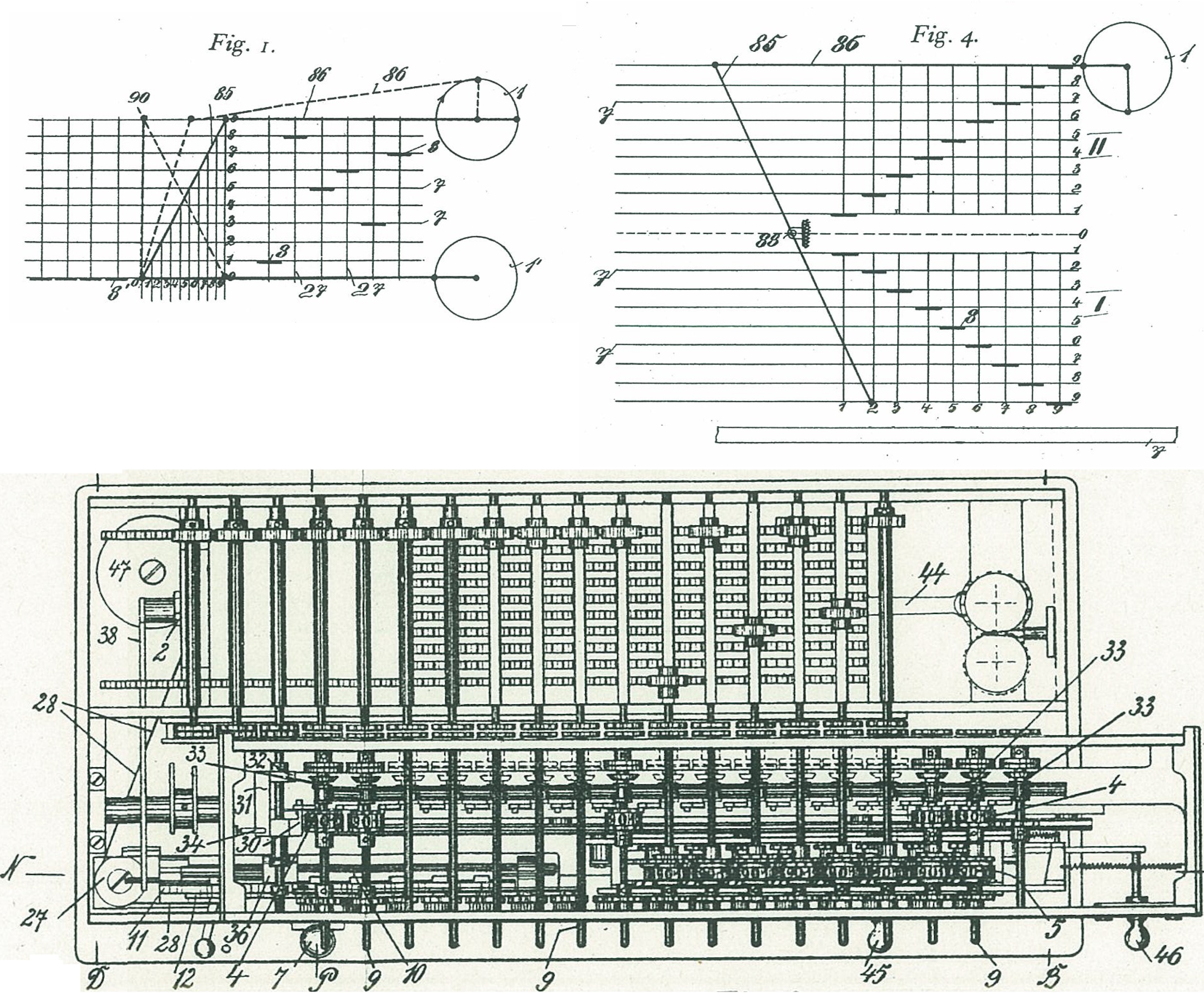
s/n 5591, Chicago, U.S.A., ca. 1900
In America, "Comptometer" was almost synonymous with "calculator". In contrast to Europe, the focus in the US was on key-operated adding machines, where no extra manipulation was required to transfer the set numbers to the result register (which is actually very similar to the operation of Schickard's machine...). Intensive training of the operators ensured that calculations were almost as fast as on "real" four-function calculators with a fixed setting register and a movable carriage with the result register. This very early model still has a wooden case.
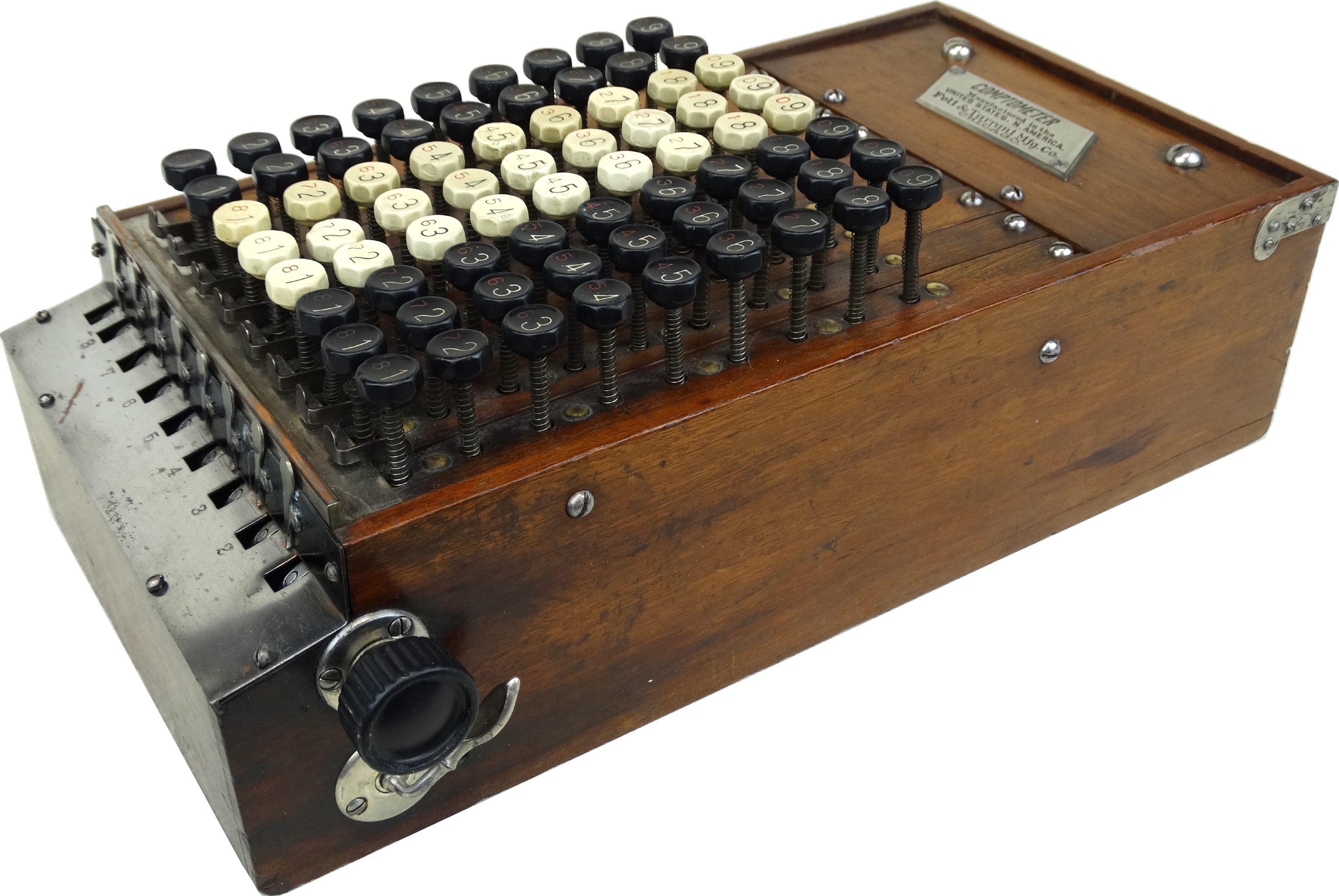
Collection: C. Vande Velde
ca. 1915
This cover, with a not entirely accurate advertisement ("multiplies and divides"?), also gives some advice - "Comptometer - pronounced like thermometer" - and dates from a later model J.
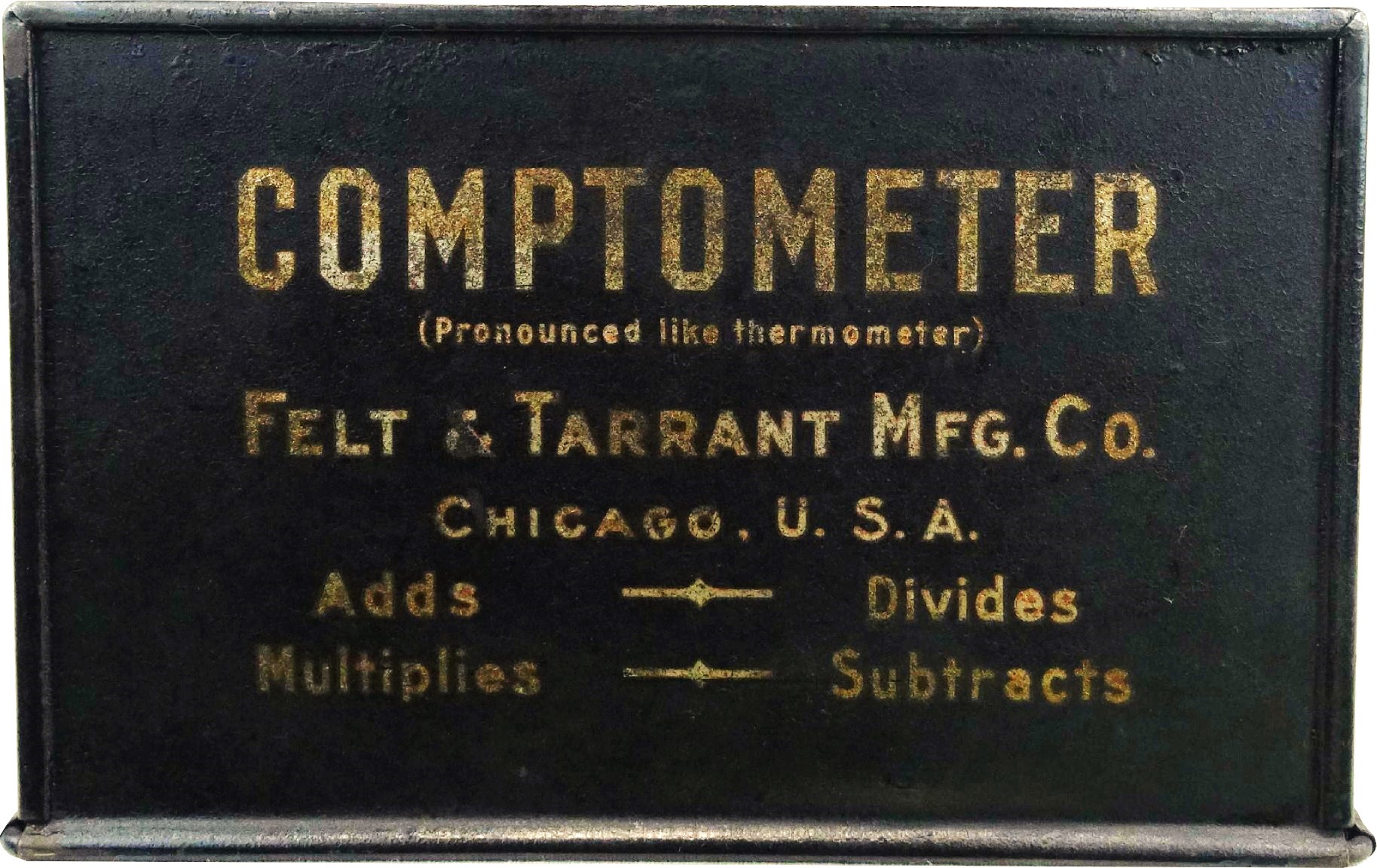
Collection: C. Vande Velde
s/n J339128/S2594, Chicago, U.S.A, ca. 1937)
Standard Model J Comptometer with an extra totaliser register in the front, allowing more complex calculations and keeping a grand total while resetting the subtotals. An improved version with a copper-plated metal case and the patented 'controlled key' mechanism, which blocked the machine if a key was not fully depressed. From 1913, the tens' carry in these machines occurred simultaneously with the release of the keys after a number had been fully entered. This allowed keys in different columns to be pressed at the same time, speeding up work. This machine was used by the pharmaceutical company Roche, as the inventory plate at the top shows.
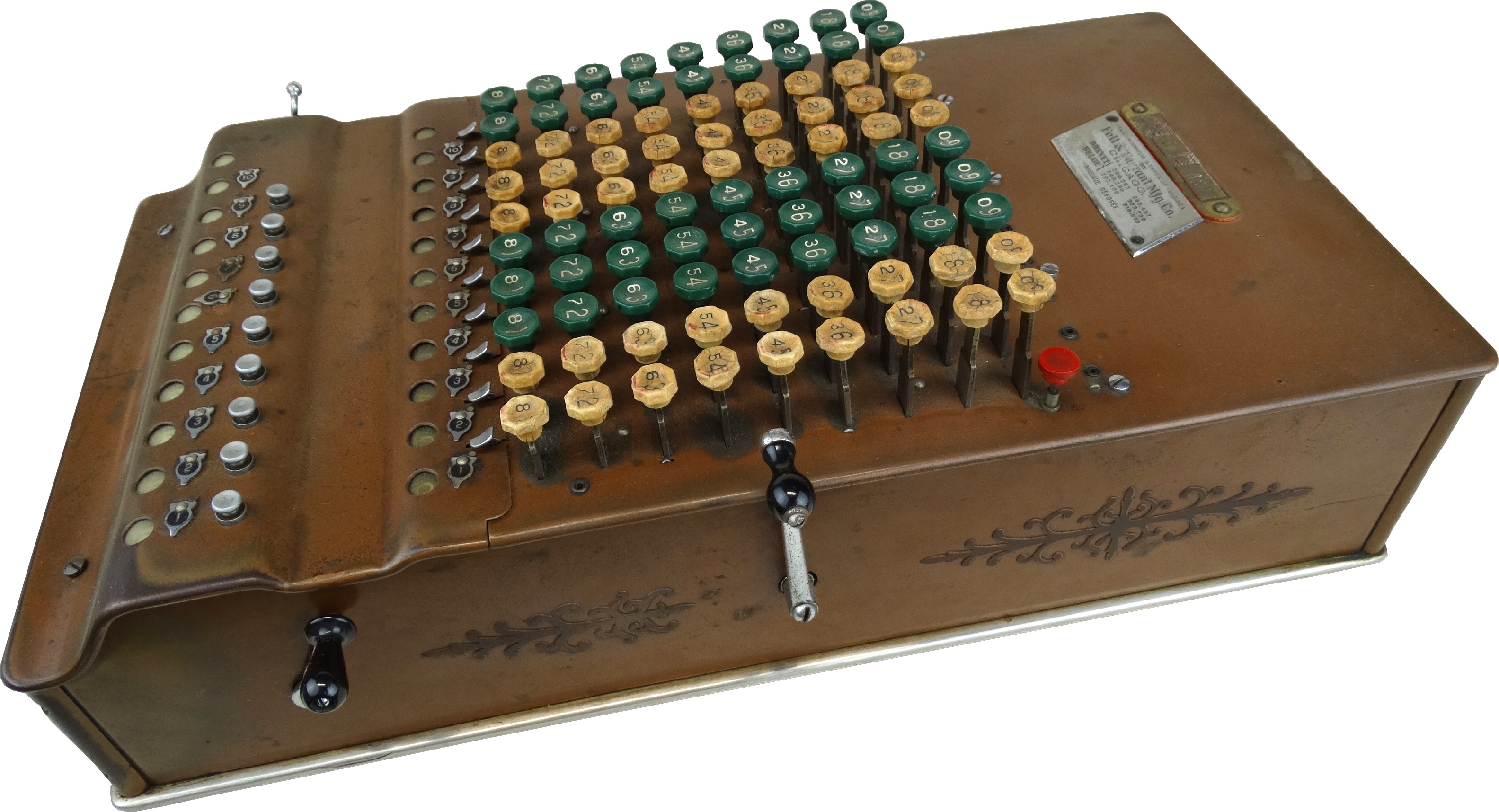
Collection: C. Vande Velde
ca. 1940
These manuals contain countless exercises, divided into classes and with target times for completion. The strength of the Comptometer Corporation's business model was that it not only sold calculators to companies, but also provided trained operators to get the most out of the machines. Not to be left behind, Burroughs soon adopted the same approach.
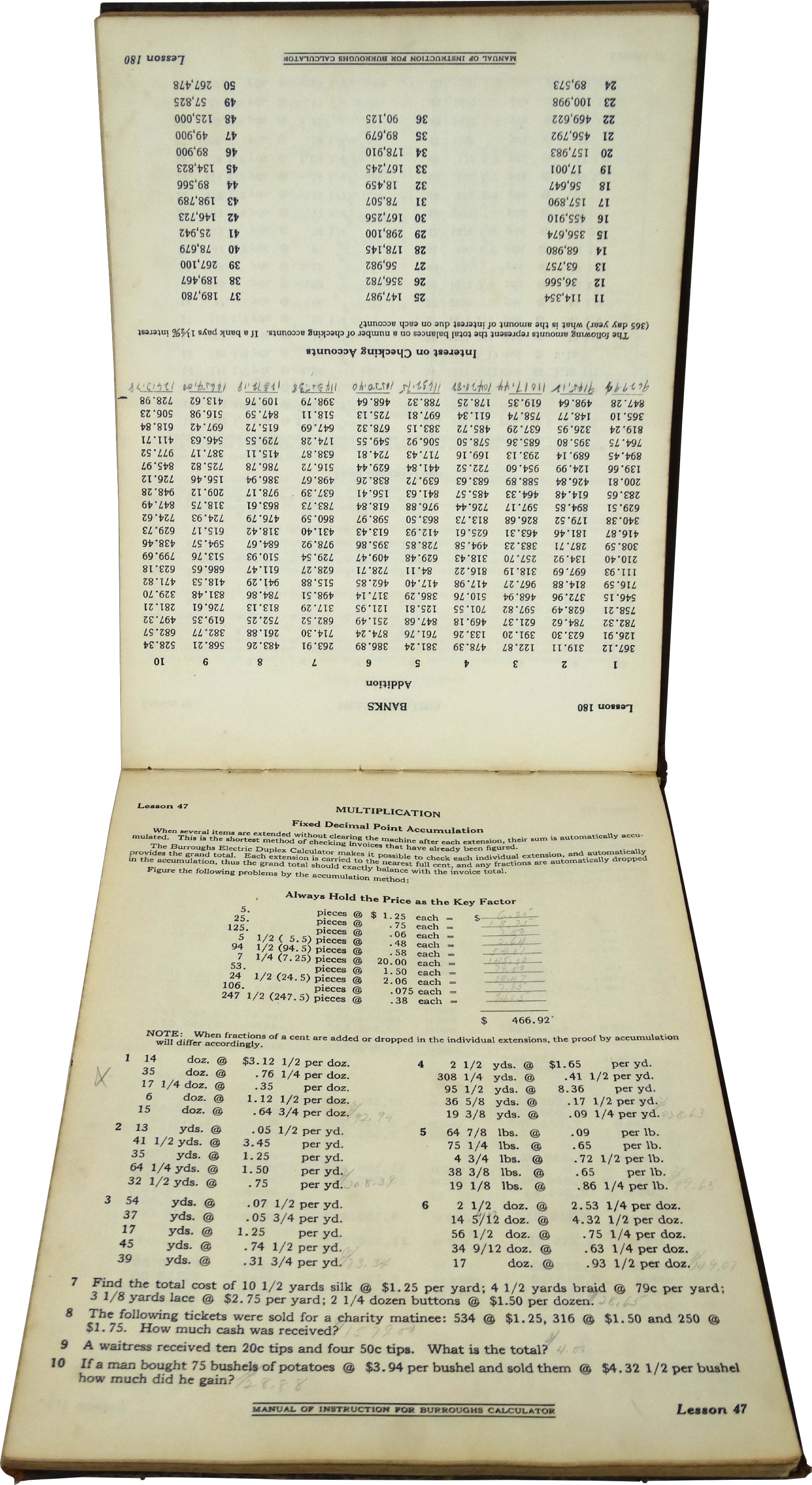
Collection: C. Vande Velde
Burroughs was the first major manufacturer of printing adding machines in the USA and became involved in a long and bitter patent dispute with the Comptometer Corporation when the latter also introduced a printing machine. However, for key-operated machines such as this one, Burroughs simply took a licence for the Comptometer patent.
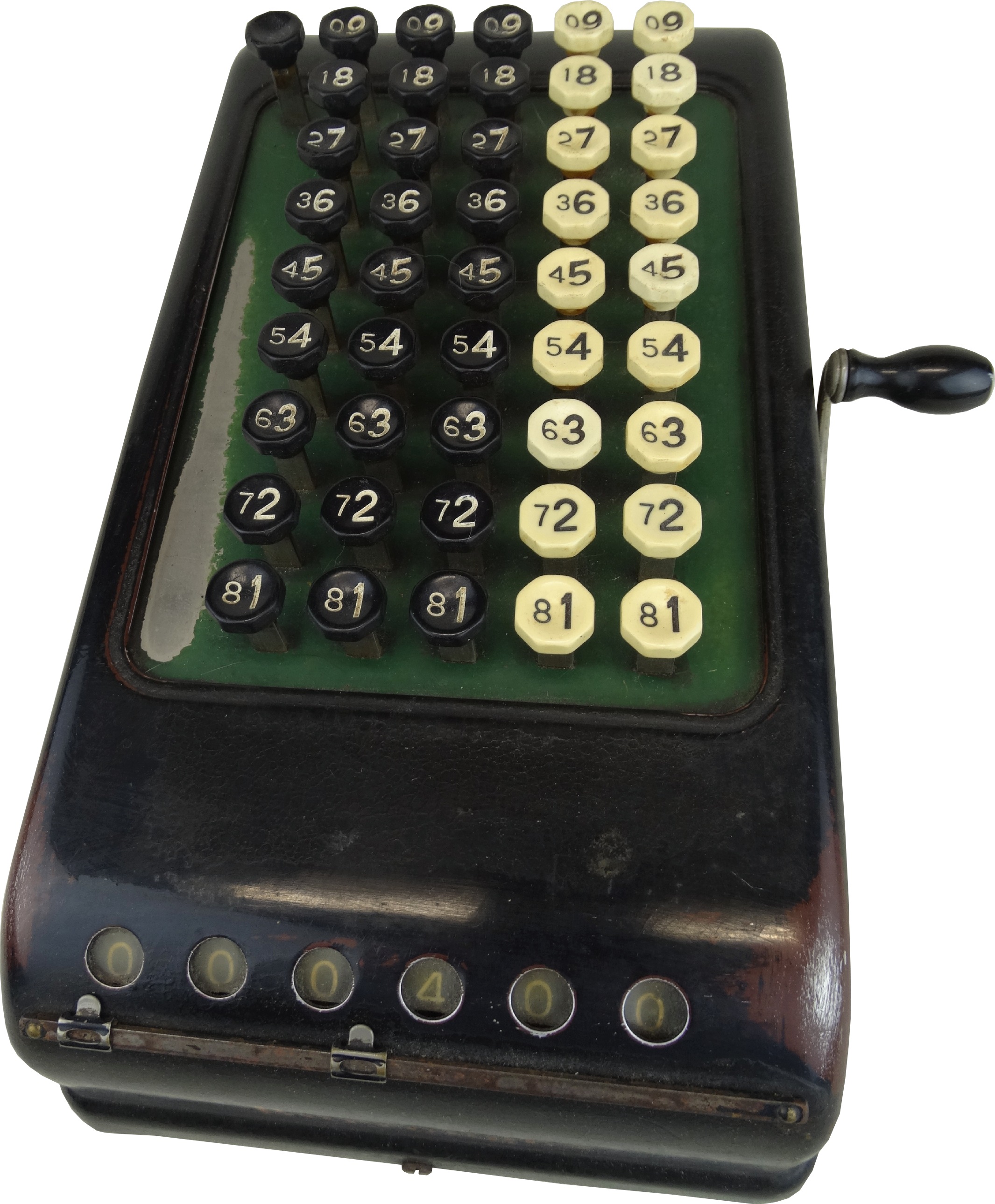
Collection: C. Vande Velde
Sumlock, Bell Punch Company Limited (London, England), 1940 … 197x
This model clearly shows the principle of direct drive by pushing the keys in so-called key-operated adding machines. There are also versions with only 5 keys ("reduced full keyboard"). Skilled operators never use the keys 6-9 anyway - it is faster to use four fingers of one hand to press a key between 1-5 twice (e.g. 4+4) than to have to move your hand to the top of the keyboard to press an 8. In the PLUS models there were some columns with even fewer keys, for calculating in English currency.
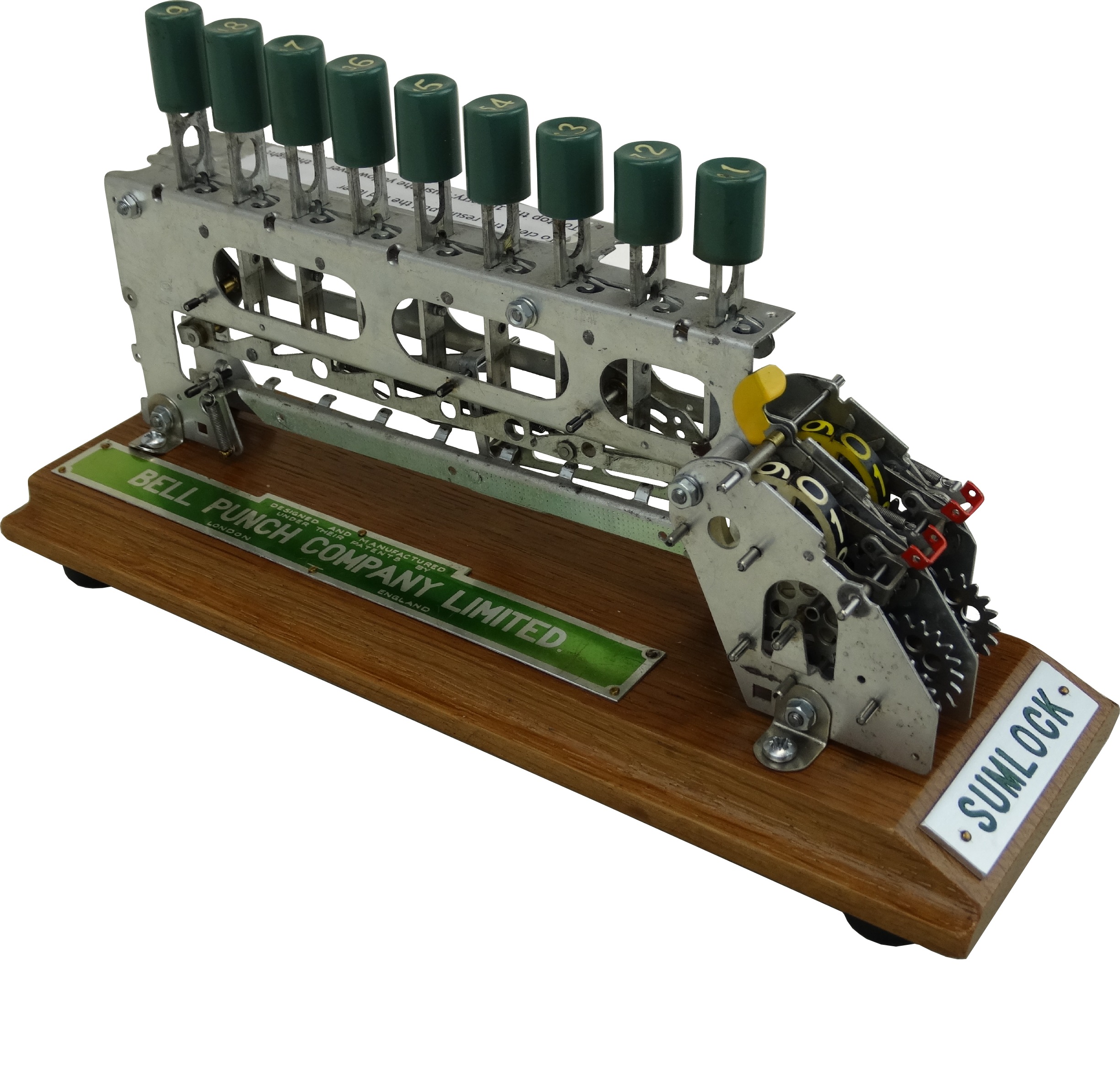
Collection: E. Smet (item 376)